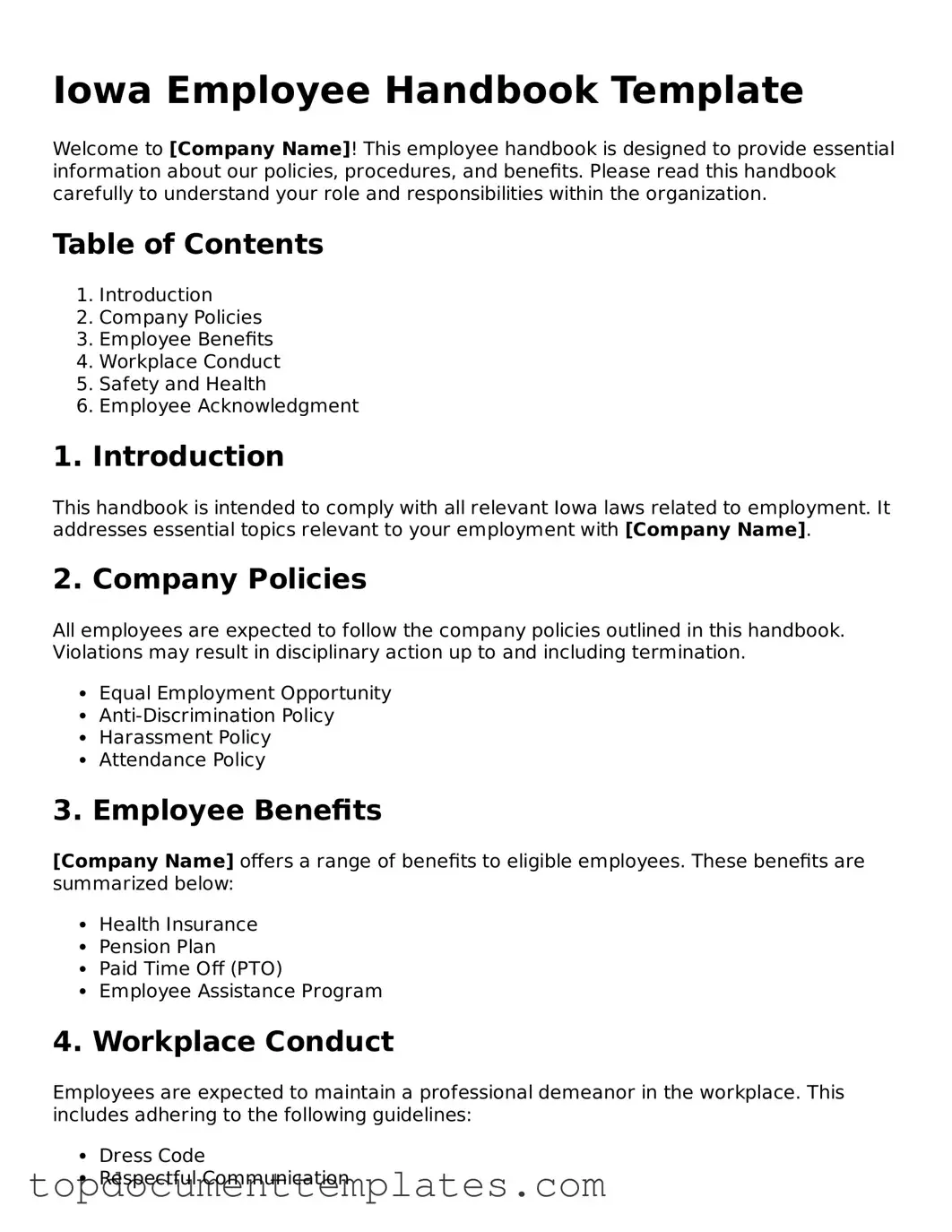Valid Employee Handbook Form for Iowa State
The Iowa Employee Handbook form serves as a comprehensive guide outlining workplace policies, employee rights, and expectations within an organization. This document is essential for ensuring that both employers and employees understand their responsibilities and the rules governing their work environment. To create a tailored handbook for your business, fill out the form by clicking the button below.
Open This Form
